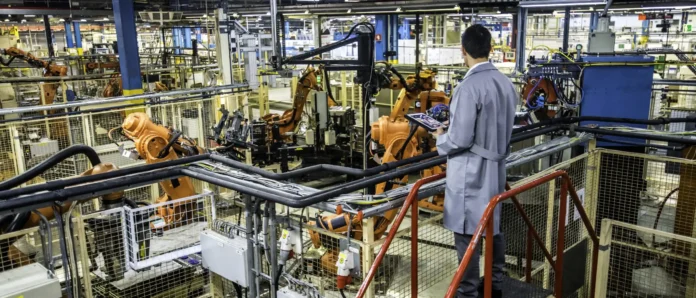Efficiency in manufacturing stands as a cornerstone for industrial growth and sustainability. One pivotal aspect in the pursuit of efficiency lies in reducing machining demands. Traditional machining processes often require extensive resources, time, and energy consumption. However, advancements in technology, innovative methodologies, and materials science have heralded a transformative shift towards minimizing machining demands in manufacturing. Let’s explore the evolution, strategies, advantages, and implications of reducing machining demands in modern manufacturing processes.
The Evolution of Manufacturing Efficiency
- Traditional Machining Methods:
○ Subtractive Manufacturing: Conventional techniques like milling, turning, drilling involve material removal to achieve desired shapes.
○ Resource Intensive: High material wastage, longer lead times, and significant energy consumption associated with traditional machining. - Technological Advancements:
○ Additive Manufacturing (3D Printing): Revolutionized manufacturing by building objects layer-by-layer, reducing material waste and allowing complex geometries.
○ Precision Casting and Molding: Innovative methods for creating intricate parts with minimal material wastage. - Metal Injection Molding (MIM):
○ Efficient Process: Metal injection molding combines the versatility of plastic injection molding with the strength and integrity of metallic materials. It offers a cost-effective method for producing complex parts in high volumes, bringing about significant efficiency in manufacturing.
○ Reduced Machining Demands: Unlike traditional machining methods, MIM requires less post-processing and finishing. This translates into less material wastage, reduced energy consumption, and shorter production times.
○ Intricate Designs: MIM enables the production of parts with intricate designs and fine details that would be challenging to achieve with conventional machining methods. It opens up new possibilities in creating components for industries such as aerospace, medical, and automotive, where precision and complexity are paramount.
Strategies to Reduce Machining Demands
- Design Optimization:
○ Design for Manufacturing (DFM): Emphasizes design considerations that reduce the need for complex machining processes.
○ Complex Geometry Consolidation: Simplifying part design to minimize intricate features or sharp angles that require extensive machining. - Material Innovations:
○ Advanced Materials: Development of materials with superior properties that allow for precision manufacturing with reduced machining.
○ Composite Materials: Combining materials to optimize strength and reduce machining needs for achieving desired specifications. - Process Innovations:
○ Near-Net Shape Manufacturing: Fabrication methods that produce components close to final dimensions, reducing machining requirements.
○ Hybrid Manufacturing: Integration of additive and subtractive processes to combine efficiency and precision.
Advantages of Reducing Machining Demands
- Resource Conservation:
○ Material Savings: Minimized material wastage through precision manufacturing, conserving resources, and reducing costs.
○ Energy Efficiency: Reduced machining demands translate to lower energy consumption, contributing to sustainability goals. - Time and Cost Savings:
○ Shorter Lead Times: Streamlined manufacturing processes lead to quicker production cycles and reduced time-to-market.
○ Cost Reduction: Lesser machining translates to lower operational costs and increased cost-efficiency in production. - Enhanced Precision and Quality:
○ Improved Accuracy: Reduced machining demands often result in better part accuracy and increased manufacturing repeatability.
○ Higher-Quality Components: Precision manufacturing yields parts with reduced defects and higher-quality finishes.
Applications and Industry Implications
- Aerospace and Automotive:
○ Component Manufacturing: Parts with reduced machining demands are critical in aerospace and automotive industries for lightweight, high-strength components. - Medical Devices and Biotechnology:
○ Precision Manufacturing: Complex and intricate medical devices benefit from reduced machining demands for precise components. - Consumer Electronics and Technology:
○ Miniaturization: Reducing machining needs aids in the production of smaller, intricate electronic components with high precision.
Challenges and Future Innovations
- Material Complexity and Characteristics:
○ Material Compatibility: Developing materials that meet performance criteria while requiring minimal machining remains a challenge.
○ Material Research: Continued research in material science to unlock new compositions with tailored properties. - Process Integration and Optimization:
○ Seamless Integration: Enhancing integration between additive and subtractive processes for optimized manufacturing workflows.
○ Automated Optimization: Implementation of AI and machine learning for automated process optimization and part design.
The paradigm shift towards reduced machining demands heralds an era of unprecedented efficiency and sustainability in manufacturing. By leveraging advancements in materials, technologies, and process optimization, industries are embracing strategies that streamline production, conserve resources, and elevate precision to unparalleled levels.
As manufacturing continues to evolve, the pursuit of reduced machining demands stands as a testament to the industry’s commitment to efficiency, sustainability, and innovation, charting a course toward a future where precision and resource optimization converge seamlessly, redefining the landscape of modern manufacturing.


